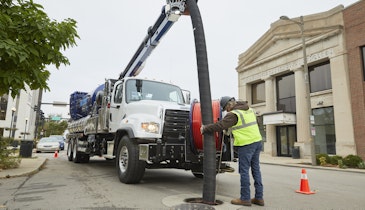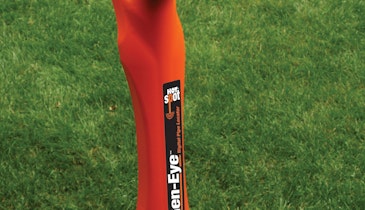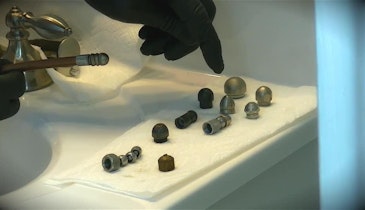
Interested in Education/Training?
Get Education/Training articles, news and videos right in your inbox! Sign up now.
Education/Training + Get AlertsAuthor’s Note: The following information contains suggestions you may want to use in working with personnel from the federal Department of Labor’s Occupational Safety and Health Administration. It is not presented as legal advice. As appropriate, consult with your legal counsel. Under the Occupational Safety and Health Act of 1970, OSHA may conduct workplace inspections to determine if an employer is complying with OSHA standards.
You shouldn’t be without a plan for an OSHA job site visit. Inspections are generally conducted without much prior notice. There are some exceptions, but advance notice will generally be less than 24 hours.
If an employer refuses to admit an OSHA compliance officer, or if an employer attempts to interfere with the inspection, legal action may be taken. For example, the compliance officer is obligated to obtain a search warrant, if requested.
Reasons For and Types of OSHA Inspections
There are six primary reasons for OSHA inspections:
- Imminent danger is top priority. There are situations where there is a strong likelihood that the hazard could result in death or serious injury before the hazard has a chance to be eliminated through normal enforcement procedures. The compliance officer will probably ask the employer to voluntarily abate the hazard and to remove employees from the exposure. If the employer fails to cooperate, the employer could be held criminally negligent if employees are injured or killed at the site.
- Fatality or severe injury resulting in a fatality, an overnight hospitalization, an amputation or loss of an eye are OSHA’s second priority. Compliance officers will frequently show up at the scene if they hear about it over the internet, radio, or television. Accidents resulting in a fatality must be reported to OSHA within eight hours.
- Employee complaints about alleged safety violations or unsafe or unhealthy working conditions may result in an inspection. OSHA will not release the name of the complainant if the complainant requests anonymity. OSHA will also keep the complainant(s) informed of any action that OSHA takes as a result of the complaint. At the time of inspection, OSHA is required to provide the company with copies of employee complaints, without the employee’s name. Complaints may also come from police or fire departments, local or state officials, doctors who have treated employees, and others. Complaints may be filed via the internet, fax, mail or telephone.
- Program inspections are aimed at industries or occupations that have higher-than-normal accident rates. Construction and utility work are classified as high-rate industries.
- Special emphasis programs target specific types of work, occupations or hazards. They are given a high priority, and compliance officers attempt to make as many special emphasis inspections as possible. There is, in fact, a national special emphasis program for trenches and excavations. Compliance personnel are required to inspect any and all trenches and excavations they observe.
- Follow-up inspections are made to verify that violations that were noted during a previous inspection have been abated.
How to Handle OSHA Inspections
Just like you, OSHA compliance officers have a job to do. They appreciate common courtesy, and they respond in a positive manner when they see a sincere commitment to safety. Here are a few suggestions that may prove helpful in handling an inspection:
- Courteously greet the compliance officer and introduce yourself.
- Request and examine the officer’s credentials, and ask the scope and reason for the visit. Ask what job site records the officer wants to review. Determine which workers and company officials the officer wants to interview.
- If you have any reason to suspect that the compliance officer is not legitimate, call your area OSHA office and verify his/her credentials.
- Explain to the compliance officer that your company’s policy regarding OSHA inspections requires that you immediately contact your main office. Your company’s safety director or coordinator may want to be present during the inspection, in which case you may request that the officer wait until he/she arrives.
- If the OSHA compliance officer has a warrant, or insists upon proceeding with the inspection before your safety director/coordinator arrives, you should accompany the officer. Do not allow the officer to tour your job site by himself/herself.
- Answer all questions truthfully, but do not volunteer any information. Avoid making statements that might be construed as an admission of guilt, and do not speculate as to how an accident occurred.
- Explain items that the compliance officer does not understand or misinterprets, but do not argue.
- The compliance officer will probably take notes, photos, videos and measurements. You should do the same. In fact, it is a good idea for you to take multiple pictures or videos from the same and different angles.
- Do not give the compliance officer free access to your document storage. Provide only those documents the officer specifically requests. And make a photocopy of each document before turning them over.
- Make a list of employees the compliance officer interviews.
- As a show of good faith, immediately shut down machinery or equipment that the officer says does not meet OSHA standards.
Closing Conference
In most cases, once the inspection is complete, the compliance officer will hold a brief closing conference. The officer will review the alleged violations with you. You should take written notes so that you can inform your safety director or coordinator of the results. Occasionally, a closing conference will be postponed until the compliance officer discusses the inspection with his/her superiors.
Employers’ Rights Following an OSHA Inspection
Informal Hearings — Employers have the right to an informal hearing with the OSHA area director following receipt of a citation and proposed penalties. The alleged violations, any penalties, and/or abatement requirements can be discussed. The OSHA area director has the authority to enter into a settlement agreement that could revise the citation and/or penalty. In most cases, the OSHA area director will show the company the evidence, including pictures or videos. Reviewing the evidence may help the company make a more informed decision regarding settlement of the case.
Informal hearings may result in revised citations and reduced penalties. However, contractors should clearly understand that if they agree to settle the case, they forfeit the right to contest the citation and proposed penalty. The violation will also be placed on the contractor’s OSHA record, and could be used as the basis for a repeat violation if a similar violation is cited within a three-year period.
Because of the severity of injuries and frequency of deaths in trenching and confined-space situations, OSHA usually classifies those citations as “serious.” Repeat violations almost always result in more severe penalties. Citations can even be classified as “willful/criminal,” and criminal charges can be filed against a contractor.
Notice of Contest — Any time within 15 working days after receipt of citations and proposed penalties, the contractor has the right to file a Notice of Contest. A copy of the Notice of Contest must be given to the employees’ authorized representative. If an employee bargaining unit does not exist, a copy of the notice must be posted in a prominent location in the workplace or given to each employee.
Upon receipt of the Notice of Contest, the file is given to the Occupational Safety and Health Review Commission. The commission is an independent agency not associated with OSHA or the federal Department of Labor, and it will assign the case to an administrative law judge who will schedule a hearing. The judge may uphold, modify, or eliminate any item of the citation or penalty the employer has challenged. Once the judge has ruled, any party to the case may request a further review by the Review Commission. Rulings of the commission may be appealed to the appropriate U.S. Court of Appeals.
What is a “State Plan” State?
Twenty-five states and Puerto Rico administer their own safety and health programs, and are referred to as “State Plan” states. These states must adopt standards and enforce requirements that are at least as stringent as the federal requirements. Most of these states have similar inspection procedures to OSHA.
For a Good Outcome ...
Be proactive and keep accidents from occurring in the first place. How?
- Make safety an important part of your company’s culture and every job.
- Properly train all personnel.
- Use the appropriate safety equipment and construction techniques for every task.
- If you are uncertain about how to handle a dangerous situation, seek the help of others who are more familiar with proper safety procedures.
- And if you have a problem following an inspection, consult a good attorney who is experienced in handling OSHA matters.
OSHA inspections are fraught with tension. Having proper policies in place and applying solid, effective construction safety practices, coupled with a healthy dose of common sense, can ease the tension when OSHA shows up.
About the Author
David Dow is co-founder of TrenchSafety and Supply — now part of Underground Safety Equipment, LLC — which supplies excavation safety products and services to construction, excavation, and utility companies. From its facilities in Kansas City, Missouri; Lafayette, Colorado; Memphis and Nashville, Tennessee; North Little Rock, Arkansas; Salt Lake City, Utah; and San Antonio, Texas, Underground Safety Equipment provides sales, rental equipment, repair service, and safety training. Dow is also chair of the Training Committee for the North American Excavation Shoring Association (NAXSA).
Visit www.TrenchSafety.com or www.UndergroundSafety.com.





